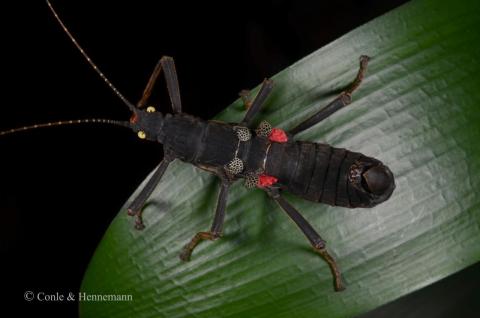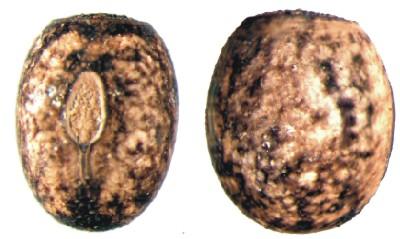
Genus
Species
Stock
CLP
21
PSG
270
Culture status
In culture
Foodplants
Privet (Ligustrum spp.)
Aucuba japonica
Olea europaea
Bramble (Rubus spp.)
Breeding notes
(by Bruno Kneubuehler)
General Notes
- breeders who contributed to this care sheet Oskar Conle, Frank Hennemann
_________________
Origin
- Cordillera del Condor, 1200 – 1800m, Northern-Peru
_________________
Females, Males
- females are 7 cm, males 6 cm long
- both sexes have bright red wings which they display often when handled
_________________
Food Plants
- they feed readily on privet (Ligustrum sp.) and Lonicera cf nitida sp. (which is a common garden plant)
- Aucuba (Aucuba japonica) - is well accepted by all stages (Sarah-Jane Dulitz, Germany)
- bramble (Rubus spp.) - is well accepted by L3+ (Yeisson Gutierrez, Germany)
- Olive tree (Olea europaea.) - is well accepted by nymphs and adults (Pablo Valero, Spain)
_________________
Breeding Notes
- this is one of the most beautiful species in culture today
- small sized, yet easy to breed at room temperatures
- egg take 3-4 months to hatch and nymphs grow up in about 5 months
- do not keep the eggs very humid, they do not suffer if kept dry for a short time. They will even hatch when kept totally dry
- an airy, well ventilated cage with dry paper on the ground is best
- do not keep this species in high humidity
- you may provide them with a cup of water, filled with paper tissue for them to drink water
- they do well even in small cages
- there is some chance that nymphs and adults will drown in the container for the food plants – therefore cover the container with cotton wool
- warning - this species can spray a defensive liquide from glands just behind the head when handled. This liquid irritates the eyes for a short while, not really harmful but better to avoid it (I have made the experience myself)




























